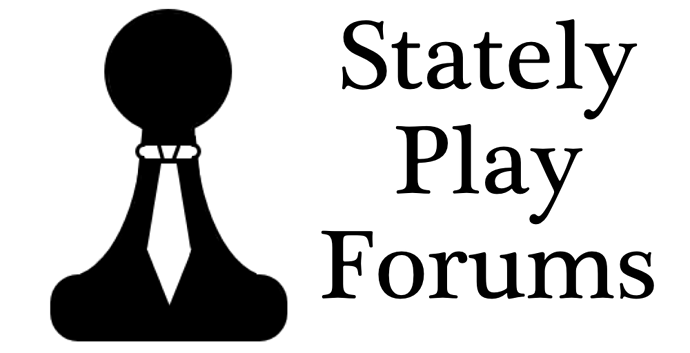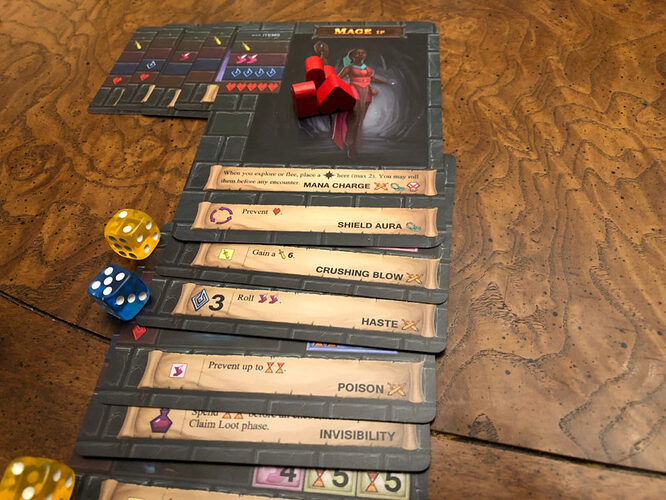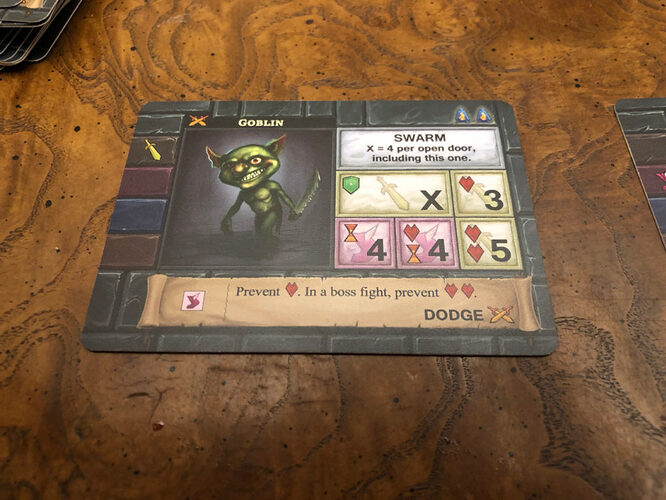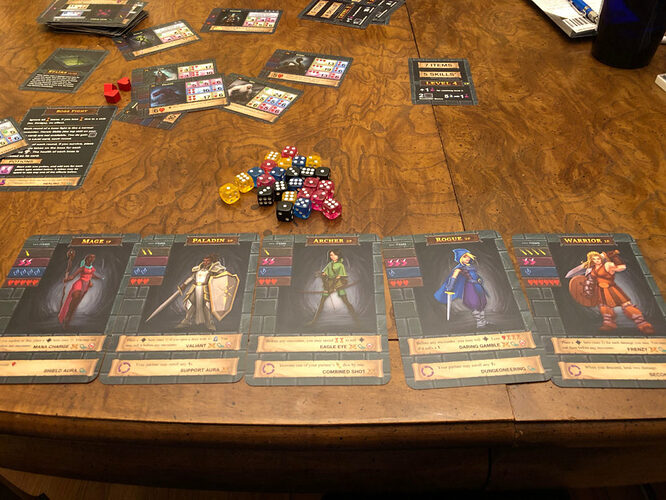Originally published at: http://statelyplay.com/2018/01/05/cardboard-critique-one-deck-dungeon/
Tabletop •
There aren’t many activities where being a friendless abomination is actually a boon, but board gaming is getting there. There’s a bevy of solo board games on the market and it seems like I’m discovering more and more of them each week. Asmadi’s One Deck Dungeon is a one or two player affair (you can play up to four with two copies), but I’m going to focus on the solo game. Because I’m alone. Yeah, I already covered that.
Even if you’re one of those cool people with family and/or friends who want to game with you, this review might still be illuminating [illuminating is not a word I would apply to any of your reviews -ed.]. That’s because our friends at Handelabra will be bringing ODD to our PCs and tablets later in 2018, meaning what follows should be applicable to all you digital board gamers as well.
One Deck Dungeon is a roguelike in card form consisting of, wait for it, one deck. You’ll cycle through the deck three times trying to stay alive while improving your character with the goal of defeating the Big Bad when you reach the bottom of the dungeon. Unlike any other tabletop experience I’ve ever tried it does feel like a roguelike, similar to games like Solitairica or 100 Rogues.
To begin, you’ll select a character from five archetypes: rogue, wizard, fighter, paladin, archer. Each has different stats that will correlate directly to how many dice of each color you’ll roll. For example, the fighter has four “melee” symbols but only one “magic” symbol, whereas the rogue has four “agility” symbols and two “magic” symbols. It’s a simple, yet effective, way to make each character class feel distinct from the others.
[caption id=“attachment_4074” align=“aligncenter” width=“1024”]
Behold my fully decked-out mage! I’ve named her Dragon Fodder.[/caption]On top of the different dice you’ll be rolling, each character also begins with innate skills that they can use from the beginning of the game. Most of these entail earning “wild” dice when you roll, but the means to obtain them feel appropriate for each class type.
You’ll shuffle the cards which make up the dungeon and place them atop a Stairs card. When you go through the deck, you’ve found the stairs and can descend to the next level of the dungeon where you’ll shuffle all the cards and start over. The dungeon level is tracked via the Boss card which, one one side, has the boss stats for your dungeon and, on the other, special dungeon effects you have to contend with as you progress downwards.
[caption id=“attachment_4075” align=“aligncenter” width=“1024”]
This goblin is a pushover for a Warrior, but is equivalent to a Beholder for my mage who’s criminally short on yellow dice.[/caption]This highlights one of ODD’s greatest strengths, graphic design. Each card is built in a way to be used as an item, skill, tracker, experience point marker, potion, etc. Your character and the dungeon will change over time and could have easily become a Sentinels of the Multiverse-style fiddly nightmare [the tabletop version of SotM. The digital version takes care of the bookkeeping for you -ed.]. Instead, everything is streamlined and keeping track of new powers, spent abilities, and new threats is incredibly simple. Cards slide under your character sheet revealing only the item stats that blend into your original dice stats or only reveal a new skill your character learned, lining up with your other skills. It’s fairly brilliant and part of the fun of playing ODD on the tabletop is watching your character sheet grow from the one card newb to a beast with stacks of new cards played underneath it.
Gameplay is incredibly simple as well. Each turn you must either explore or open a door. Both actions cost you two “time”, which simply means you discard two cards from the dungeon deck. Time is important because you need to get to the stairs at the bottom of the deck, but if you get there too fast you won’t have gained enough goodies to make it through the hurdles the dungeon will throw at you. It also means that, even though you’re going through the same deck three times during a game, it’s likely you’ll constantly be seeing different cards because many of the cards were simply discarded for time the last time you cycled through the deck.
[caption id=“attachment_4076” align=“aligncenter” width=“1024”]
Heroes! Or, as the bosses call them, Floss![/caption]Exploring is merely bringing the number of doors on the table up to four. Opening a door is where the real action is. A card is flipped revealing either a monster or a trap. You can decide to flee and leave the card face up on the table and taking up one of your available door slots, or you can choose to take on the challenge. Traps will offer you two options, each of a different color. You need to decide which color you’re going to attempt and only roll your dice of that color. Fighting creatures allows you to roll all your dice and then using your abilities and some dice trickery to attempt to fill in all the colored squares on the dungeon card. Any squares not filled in will deal your character either damage or force you to discard time, or maybe both. Regardless of how many squares you failed to cover, as long as you survived you get to claim loot from the confrontation. Each trap or monster has a new skill on one side, an item on other, or experience points on the third. You slide the card into the appropriate space and repeat with another door.
The goal is to get through the deck three times and then battle the boss, of which ODD offers a choice of five: Yeti, Hydra, Dragon, Lich, and Minotaur. Each boss adds a different flavor to the dungeon and each has different stats and special abilities if you make it that far. Many times you won’t. Actually, most times you won’t. I’ve only made it to the boss in two of my six games thus far and haven’t managed to bring them down.
[caption id=“attachment_4077” align=“aligncenter” width=“1024”]
A boss orgy. The Hydra likes to watch.[/caption]Overall, it’s a fun and fast game that can wrap up in minutes if you’re unlucky, or last about 30 if you manage to make it all the way through to the end. I’m not sure it’s the kind of game that I would run and grab when I have a full night to myself, opting instead for something with a little more meat. That said, for traveling it’s brilliant. Small enough to cram into a carry-on bag with a tiny enough play area that you could play it in a tent on a rainy day camping.
As I mentioned above, the game does handle two-players out of the box but I haven’t yet attempted it with a companion. From what I can ascertain, its success will rely on how much you like cooperative games. The rules appear unchanged, but the heroes’ dice pools will be reduced so you’ll have to combine dice each turn and then split the damage between you. While I’m sure some will like this way of playing, I can totally understand why Handelabra is focusing on the single-player experience first.
There is also a campaign mode for the game, in which you can build up your hero over multiple dungeon runs. I haven’t played this version either [what a complete and informative review, dumbass -ed.], but the game comes with a notepad full of campaign sheets and offers a new way to play. Someday I’ll get it to the table, but I feel like I need to figure out how to beat individual bosses before I take the plunge.
If you’re looking for a quick, solo game that gives you a full game’s worth of RPG goodness, One Deck Dungeon should be on your wishlist. It’s easy to understand, not fiddly, and, best of all, there’s enough variation that games don’t feel like carbon copies of each other. If you don’t mind a lot of randomness (you’ll be rolling a handful of dice every turn), ODD is a keeper and I’m even more excited to see what Handelabra does with the digital version later this year.




